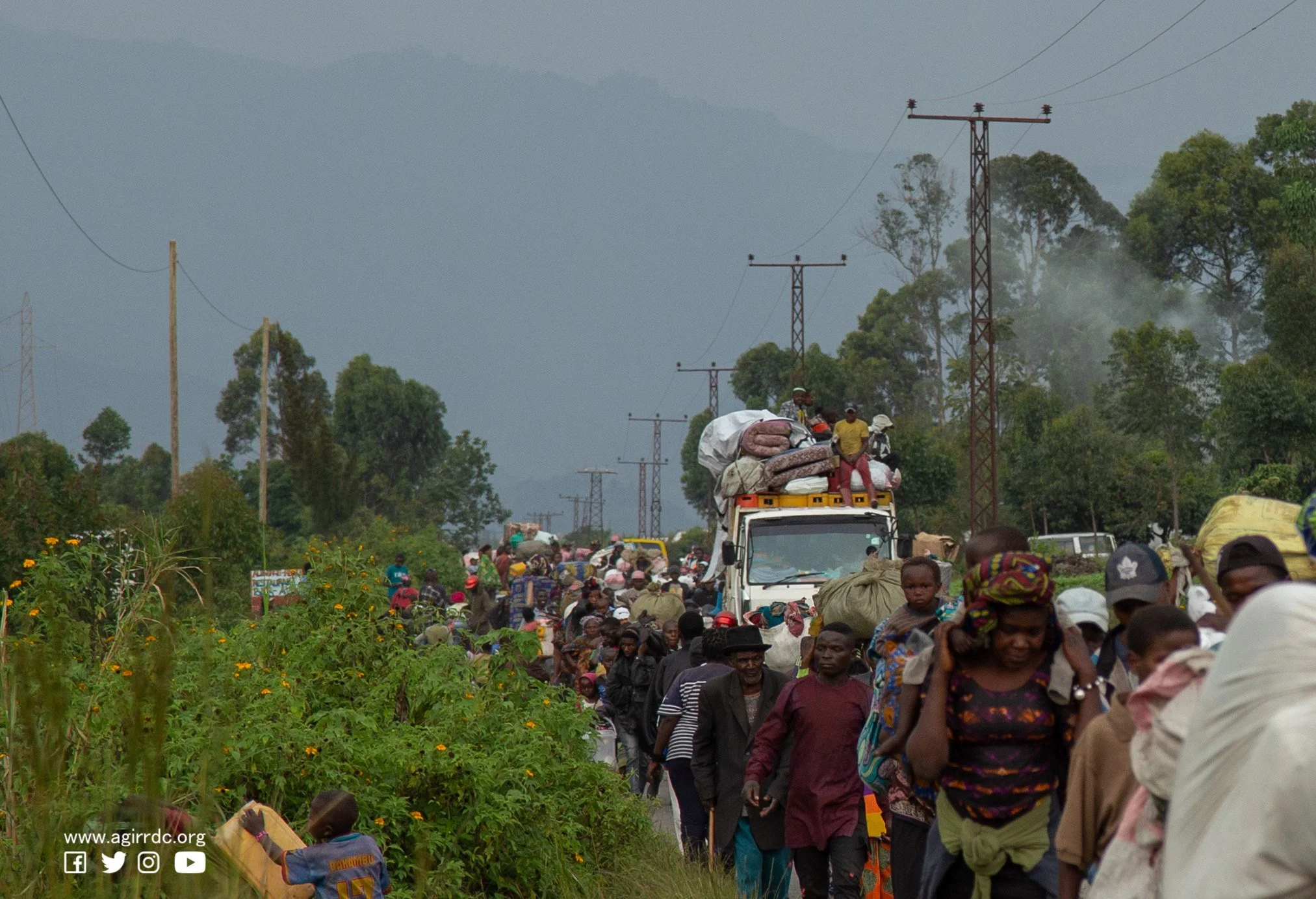Goma has been a site of repeated mass displacements for three decades, starting with people fleeing the genocide in 1994. Local armed conflicts, full scale wars, and a temperamental volcano have forced people out of their villages with nothing but what they could carry again and again. Some people have been forced to start their lives over many times.
In recent years, the disasters are frequent and intense. In May 2021, Mount Nyiragongo erupted and displaced around 50,000 people. A year later, armed conflicts began and displaced three waves of people across North Kivu.
The people in Goma wait to see which way the troops will move as more internally displaced people arrive. Armed conflicts have forced more than 530,000 and perhaps as many as 700,000 people from their homes in North Kivu since March of 2022. The pressure is enormous — Goma is a major city comparable to the size of Seattle.
While large, international NGOs have a role in addressing supply chains and care in such ongoing crises, they are not able to address the acute trauma and dire circumstance on the ground as the crises ensue. They have not arrived yet. Local professionals are present to respond as the disaster unfolds. Our partners are there on Day 1. They speak the local languages. They understand internal displacement in Congo because they’ve lived it — and recovered from it — sometimes several times in their lives.
We partner with Congolese who live in the areas where they serve.
AGIR continues to operate Twa Weza Shinda as they continuously add crisis response to their daily routines. They apply their experience nimbly as challenges present themselves.
Addressing trauma first is paramount. Our partners at AGIR focus on helping people rebuild their lives — but training is not effective until they address their trauma.
It is not just the horror of war, but life in a displacement camp that can be traumatic. Many people in camps do not have family or anyone they trust near them. People around them might not speak their language. Social isolation is common, and trust is dangerous and unfamiliar.
AGIR creates ongoing programs that involve health practitioners, artists, and volunteers that address trauma so people can begin to heal and start over.
When violence erupts and people flee, families get separated. Children get lost and do not know where they are or what happened to their parents.
AGIR works to reconnect families who lost each other in the fog of war. They find lost children and organize a system where they can safely be reunited with their parents.
This is a community effort that requires printing photographs, connecting people by phone, and a word-of-mouth peer leadership network to successfully connect families who’ve been accidentally separated by the crowds.
During an internal displacement crisis, there are few supply chains, open businesses or jobs available. The economy that organically grows out of the rubble is one that addresses immediate need and helps people to survive.
AGIR teaches job skills that travel and are needed in a community created by waves of displacements. Pictured here are masonry students learning to work on an infrastructure project.
Traveling job skills can be ones that are in high demand and need little equipment, for example, an aesthetician might serve a local group of people who live in an evolving refugee camp.




